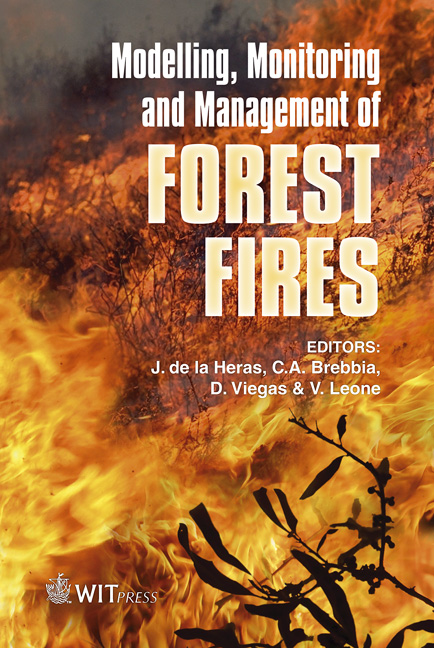The Resilience Ability Of Vegetation After Different Fire Recurrences In Provence
Price
Free (open access)
Transaction
Volume
119
Pages
14
Page Range
297 - 310
Published
2008
Size
484 kb
Paper DOI
10.2495/FIVA080301
Copyright
WIT Press
Author(s)
A. Schaffhauser, T. Curt & T. Tatoni
Abstract
Literature on relationships between wildfires and vegetation in Mediterranean areas indicates high resilience ability for most ecosystems on calcareous soils, but data are scarce for acidic soils. The resilience ability of a \“fire-driven” ecosystem is expected to depend both on the characteristics of the ecosystem and on the fire recurrence. We investigated the vegetation according to fire recurrence in a site with ecological and patrimonial stakes (the Maures massif, Provence, South Eastern France), in order to determine which ecosystems are more resilient and why. We sampled different modalities of fire recurrence (frequency of fires and interval of time between fires), and we investigated vegetation resilience to fire through different components such as composition, richness, diversity and structure. The sites corresponded to five modalities of increasing fire recurrence since 1959: control plots which had not burned since 1959, plots burned by a major and intense wildfire in 1990 (= reference fire), other plots burned twice or thrice before the 1990 fire and plots burned several times then and in 2003. The results confirmed that our Mediterranean ecosystems on acidic soils are mainly auto-successional, as vegetation composition remained rather constant after fire. Significant differences of composition existed between the control plots and the plots lastly affected by the 2003 fire. In contrast, significant differences of functional diversity (i.e. plant traits) existed among the five modalities, in particular an increase of ruderal species and a decrease of competitive taxa with increasing fire recurrence. Moreover, some types of vegetation were identified according to fire recurrence modalities. A variation partitioning procedure (partial CCA) indicated that the environmental data set explained better the plant distribution than the fire recurrence data set. The final objective of the study is to improve the understanding of the interrelationships between fires and the dynamics of vegetation, for a sustainable management of these Mediterranean ecosystems. Keywords: fire recurrence, plant diversity, structure, auto-succession, acidic soils, common pool of species, shrublands, cork oak woodlands (Quercus suber L.).
Keywords
fire recurrence, plant diversity, structure, auto-succession, acidic soils,common pool of species, shrublands, cork oak woodlands (Quercus suber L.).





